Good Carbs on Keto Diet
Carbohydrates, or "carbs," are one of the macronutrients found in food. Cutting carbs on a low-carb or keto diet may help you lose weight, improve blood sugar control, and provide other health benefits. In this guide, you'll learn all about carbs, including the best types and amounts to consume.
- What are carbs?
- How are carbs processed in the body?
- Video: Carbohydrates on a low-carb diet
- How are carbs used by the body?
- What are the benefits of restricting carbs?
- Do I need a minimum amount of carbs?
- The best carbs to eat on a keto or low-carb diet
- What are "net carbs"?
- How many carbs should I eat per day?
What are carbs?
"Carb" is short for "carbohydrate." Like the other macronutrients (major nutrients), protein and fat, carbs provide your body with energy (calories).
Watch a summary of this guide in video
There are two basic types of carbs in food: starches and sugars.
Starches
Starches are made up of long chains of individual glucose (sugar) units that are linked together.
The diagram below is a simplified depiction of the structure of starch.

Starchy foods generally don't taste sweet.1 However, because starch is just a long chain of sugar (glucose) molecules linked together, once it's digested in the gut, it's absorbed into the blood as pure glucose, which raises blood sugar levels.2
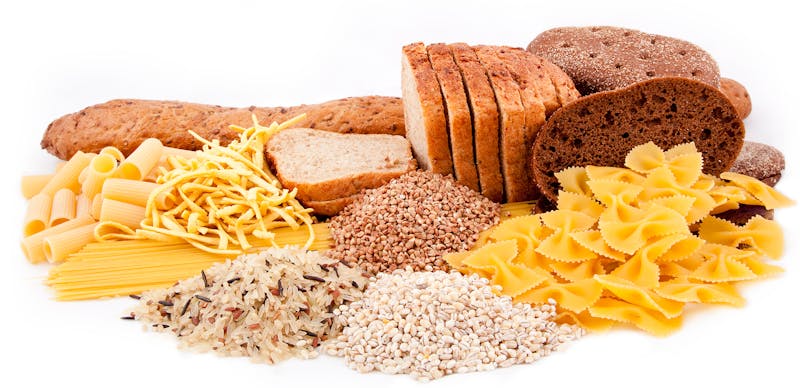
Examples of foods high in starch
- Rice
- Pasta
- Potatoes
- Cereal
- Bread
Sugars
Sugars are much shorter chains compared to starches. In fact, sometimes they are just a single glucose or fructose molecule. However, in food they're usually two sugar molecules linked together, such as sucrose (glucose and fructose) or lactose (glucose and galactose).
Below are simplified depictions of a sucrose and a lactose molecule.
Sucrose

Lactose
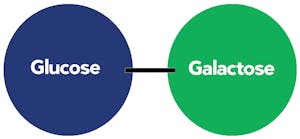
Sugars are found in whole foods such as many plants and dairy products, but aside from fruit and root vegetables like carrots and beets, these foods don't taste very sweet. Most vegetables, nuts and seeds only have tiny amounts of sugar.
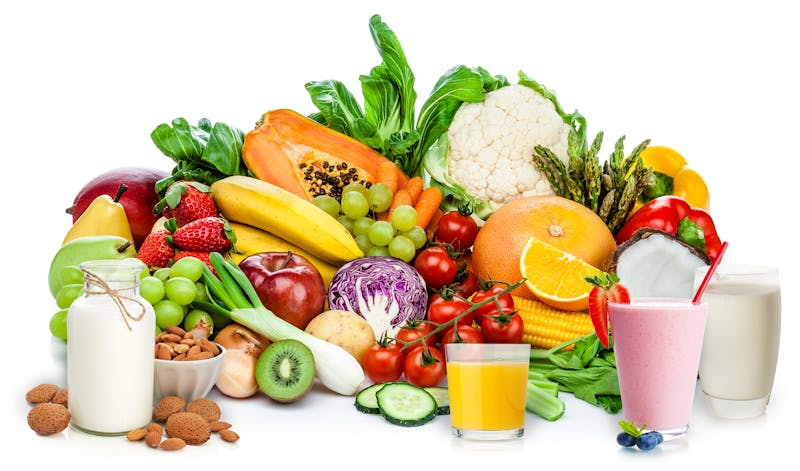
Examples of whole foods that contain sugar
- Fruit
- Vegetables
- Nuts and seeds
- Milk, yogurt and kefir
Processed and packaged foods often contain added sugars. Food manufacturers typically add refined sugar or high-fructose corn syrup to their products, although they sometimes use honey or other "natural" sugars that are considered healthier. But sugar is sugar, and your body processes all of it the same way.3
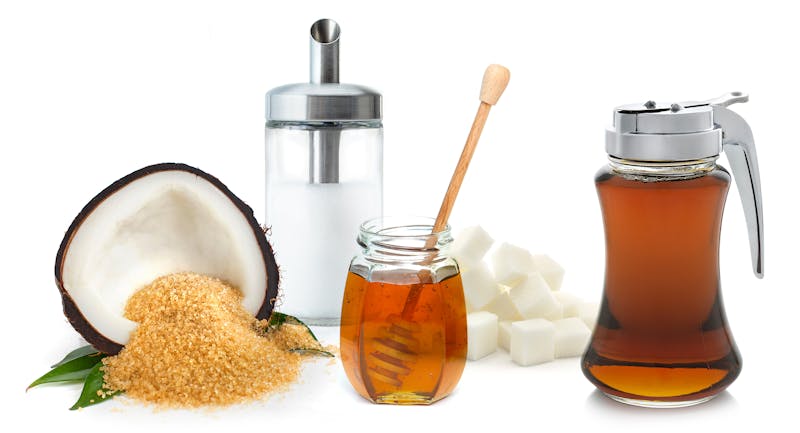
Examples of added sugars
- Refined white sugar and all other sugars: brown sugar, raw sugar, beet sugar, coconut sugar, turbinado sugar, etc.
- Dextrose
- High-fructose corn syrup
- Honey
- Maple syrup
- Molasses
- Agave nectar
More
To learn more about sugars and other sweeteners on a keto or low-carb diet, check out our keto sweeteners guide.
How are carbs processed in the body?
Starches and two-unit sugars like sucrose and lactose are too big for your body to absorb. Therefore, after you eat carbs, your body produces enzymes that break them down into single sugar units that can be absorbed.
These single sugar units are handled by the body in different ways. To understand the effect of carbs on the body, it's useful to know how glucose and fructose are absorbed.
Once glucose enters your bloodstream, it causes your blood sugar to rise immediately.4 This prompts your pancreas to produce insulin, the hormone that allows glucose to move out of your blood and into your cells. How much your blood sugar goes up – and how long it stays elevated – depends on a number of factors, including how many carbs you eat, how much insulin you produce, and how sensitive your cells are to insulin.
On the other hand, fructose doesn't raise blood sugar the way glucose does.5 Instead, it goes straight to the liver, where it is converted to glycogen for storage.
Your liver can handle small amounts of fructose found in whole foods without difficulty.6 However, consuming processed foods and beverages high in fructose can overwhelm your liver's ability to process it properly. High fructose intake on a regular basis may potentially lead to insulin resistance, fatty liver, and obesity.7
Agave nectar and other high-fructose "healthy" alternative sweeteners are often marketed as being "low glyemic index" because they don't raise blood sugar as much as white sugar does. But they may possibly be an even worse choice than white sugar when it comes to your weight and health due to fructose's adverse effects.8
Importantly, all digestible carbs, or net carbs, are absorbed and (with the exception of fructose) can raise blood sugar — whether they come from whole or refined grains, fruits, vegetables, or sugar itself.9
How does the body use carbs?
Once the carbs you've eaten are digested and absorbed, the glucose they provide can be used as an energy source by all the cells in your body, including those in your muscles, heart, and brain.
Glucose that isn't immediately needed by these cells can be stored in your liver and muscles as glycogen (long chains of glucose, similar to starch in food). However, there's a limit to the amount that can be stored. Once your glycogen storage sites are full, any additional glucose from the breakdown of excess carbs will be converted to fat and stored in your body, including your liver.10
What are the benefits of restricting carbs?
A keto or low-carb diet provides several benefits, especially for people who want to get their blood sugar under control or lose weight:
- Lower levels of blood sugar and insulin.11
- Elimination of carb cravings.12
- Powerful appetite control.13
- Ability to go for many hours without eating due to feeling full and satisfied.14
More about the benefits of a low-carb diet
Do I need to eat a minimum amount of carbs?
The short answer is no. In fact, you technically don't need to eat any carbs at all.
When carbs are restricted, your body switches to using fat and ketones rather than sugar as its main energy source.15 Aside from your red blood cells and a small portion of your brain and kidneys, which do require glucose, your cells can use fatty acids or ketones as fuel.16 You can learn more about this in our complete guide to ketosis.
Your body is actually capable of making glucose for any cells that need it, even if you don't consume any carbs. This is because your liver can convert amino acids (found in protein) and glycerol (found in fatty acids) into glucose. This process is known as gluconeogenesis.
In their 2005 textbook "Dietary Reference Intakes for Energy, Carbohydrate, Fiber, Fat, Fatty Acids, Cholesterol, Protein, and Amino Acids," the U.S. Food and Nutrition Board of the Institute of Medicine states:
"The lower limit of dietary carbohydrate compatible with life apparently is zero, provided that adequate amounts of protein and fat are consumed." 17
Interestingly, there are nine essential amino acids found in protein and two essential fatty acids, but there is no such thing as an "essential" carbohydrate.
However, there are valuable nutrients in many low-carb foods that contain some carbs, such as vegetables, nuts, and seeds. These foods also provide fiber, flavor and texture, which can enhance your eating experience.
Best of all, including them in your diet will still allow you to experience the benefits of a low-carb or keto lifestyle.
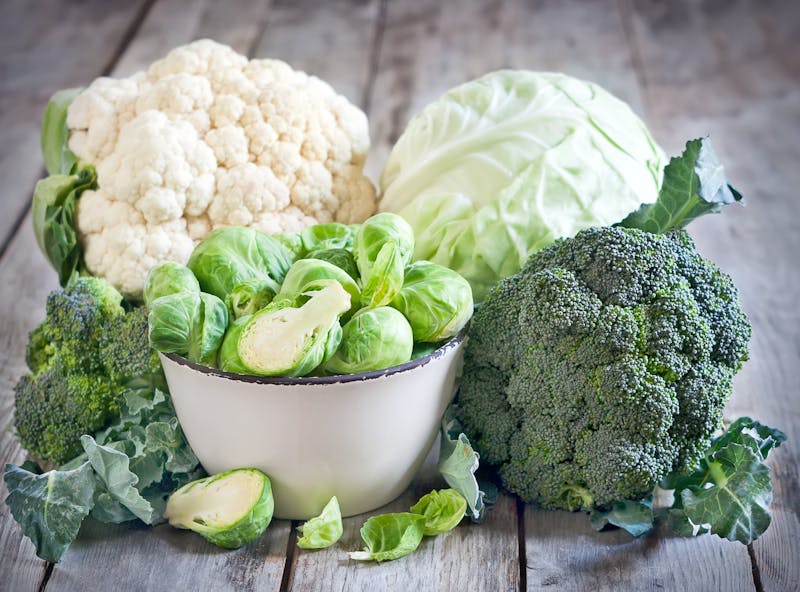
The best carbs to eat on a keto or low-carb diet
By choosing your carbs wisely you should still be able to keep your blood sugar within healthy limits, while nourishing your body with important vitamins and minerals. Adding some carbs to your diet may also make your low-carb lifestyle more sustainable, fun, colorful and varied.
Here are some of the best sources of carbs on a keto or low-carb diet:
- Broccoli
- Cauliflower
- Kale
- Leafy greens
- Asparagus
- Avocado
- Macadamia nuts
- Pumpkin seeds
- Raspberries
What are "net carbs"?
"Net carbs" refer to the amount of carbs a food contains after subtracting the fiber.
It's generally accepted that the fiber in whole foods isn't digested and absorbed.18 However, not all experts on carb-restricted diets agree on this point.
Additionally, in people with type 1 diabetes, fiber may distend the stomach and trigger the release of hormones that raise blood sugar.19 Therefore, you can either subtract the fiber carbs in whole food to get the 'net carbs' or count total carbs, depending on your personal preference and tolerance.
Here is an example of how to calculate net carbs: 100 grams (3.5 ounces) of cauliflower contains 5 grams of total carbs, 2 of which come from fiber.
5 grams of total carbs minus 2 grams of fiber = 3 grams of net carbs.
On the other hand, many processed low-carb foods display labels indicating their "net carbs," which reflect their total carbs minus added fiber and sweeteners known as sugar alcohols. Studies have shown that some of these additives can be partially absorbed and raise blood sugar levels.20 Therefore, the term "net carbs" on packaged foods may be very misleading.
When calculating net carbs, only subtract fiber from whole foods. In any case, we recommend sticking with whole foods and avoiding processed and packaged "low-carb" products.
How many carbs should I eat per day?
Not everyone needs the same carb restriction for optimal health. Healthy, physically active, and normal-weight individuals may not necessarily have to restrict carbs at all, especially if they choose minimally-processed sources most of the time.21
However, for people with a range of health issues or weight problems, it's often beneficial to keep carb consumption relatively low. Generally speaking, the lower the carbs, the more effective for weight loss and for metabolic health problems like type 2 diabetes.22
At Diet Doctor, we define three different levels of carb restriction as follows:
- Ketogenic: less than 20 grams of net carbs per day
- Moderate low carb: 20-50 grams of net carbs per day
- Liberal low carb: 50-100 grams of net carbs per day
To learn more about these levels and how to choose the one that's best for you, be sure to check out our helpful guide, How low carb is low carb?
/ Franziska Spritzler, RD
Source: https://www.dietdoctor.com/low-carb/keto/carbohydrates